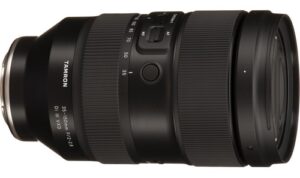Mirrorless vs DSLR – there are so many reasons to use a Mirrorless camera versus a DSLR camera. I’ve heard and seen people talk about size and weight. But is that really the reason to switch from a DSLR to mirrorless?
In this video, I share my thoughts on this ongoing discussion throughout the photography industry. Before you switch to Mirrorless hear me out and make a thoughtful decision because you may be making the change for no reason.
This is not the reason to switch to mirrorless.
Transcription was done by Descript‘s automated transcription services which means it’s an AI-generated transcript. The transcript may contain spelling, grammar
Let’s talk about mirrorless. And why would you switch Tamir list in the first place? Hey, this is Scott White and give what’s our storyteller with the camera, talking about all the things photographers like you and I are thinking about. And in this video, we’re going to be talking about mirrorless cameras and is size the reason why you switch, or is it something else? So I’m officially a full mirrorless photographer. I am using a Nikon Z six to record this video right now. And this is an icon Z seven too. They’re both basically the same body, just the inside. This is what is different than the sensor basically is what’s different than a little bit of the processor is what’s different. Oh, and the [inaudible] has two memory cards now. So the haters can’t hit anymore. So I think it’s a big misconception that the reason why you want to switch to them muralist for your photography is because of the size of the camera.
Sure. The icon disease seven two is smaller than the Nikon D eight 50. It’s lighter than the D eight 50. And in some cases, the full system, when you put on a lens is still smaller than a DSLR. I mean, if you look at the Olympus cameras, the, the micro four thirds cameras, the Panasonic micro four thirds cameras, the Fuji cameras they’re much smaller than a full frame SLR. But when you look at the Nikon cameras and the Canon cameras that are whole frame sensors, they’re actually not too much smaller than their DSLR counterparts. Of course, there, then there’s the Sony cameras, which are smaller, but mainly smaller because the actual lens Mount is smaller. So the body could actually be smaller too. But the thing is is that when you take a lens, now this is a DSLR Mount lens, not a mirrorless lens, but when you take a lens and you put it on the camera, you’re now getting the weight back. You’re getting the size back that you have with your DSLR. Many photographers who put grips on their cameras are again getting that bulk back that they get with a DSLR. So it’s not necessarily about the size or the weight of a mirrorless camera. Now I mentioned that I do not have the 7,200 as a mirrorless lens yet one day I will. So I’m using the FTC adapter. But if you look at
This, this is about the size. It would be minus the FTC adapter right here. This is about the size it would be if you have the mirrorless lens for this body. And as you can see, it’s not any smaller than a DSLR. Sure. The camera is, but in the long run, it’s really not any smaller. It’s a little lighter because again, the camera’s a little lighter, but otherwise it’s still a pretty big system to have in your hands. So what’s the advantage of the mirrorless camera. It’s the quality display between the LCD and the viewfinder right now, I am looking, you can see that you’re looking at the LCD, but now what you’re seeing is actually the electronic viewfinder. I am, uh, holding that up to the lens of my XE six. So you can see, right. It it’s a little hard to keep it steady, but, uh, this is actually the viewfinder and it’s real time.
What I mean by that is whatever you see through the viewfinder, the electronic viewfinder is the same thing you see through the LCD, which means that everything that you’re seeing is exactly what you’re going to photograph. And that is the biggest advantage of a mirrorless camera. More than the size, more than the weight, the electronic viewfinder is the huge advantage that you get from a mirrorless camera because you see what you get Wiziwig. What you see is what you get. Now, if you have any questions about either the Nikons D six, and I kind of see seven, just comment down below, I would love to answer your questions about the cameras. If you have any questions about mirrorless cameras in general, I’d love to answer your questions. Just comment down below and be sure to click the subscribe button. I publish new videos every Monday and Thursday, whenever possible. You don’t want to miss it.








My wife and I have after years of Canon SLR and DSLR bodies made our first foray into mirrorless with the Fuji X system. For us a big part of the move was about size, but we were focused on the size of the system. The EOS R system does not address that because of the size of the lenses. The EOS M system does not have any fast lenses. The X system does however address those issues. The lack of an anti-aliasing filter also helps for sharp images off an APS-C sensor.
Other benefits of the EVF are being able to use the EVF when shooting with an ND1000 filter. Where mirrorless does less well is with low-light flash photography. A DSLR does better in that scenario. We have not tried the X System for studio flash photography yet.
There are many photographers using the Fuji system with flash, so you should be good!
Very interesting, Scott! Think I shall stick to my DSLR for now!!!
The EVF doesn’t convince you to switch?